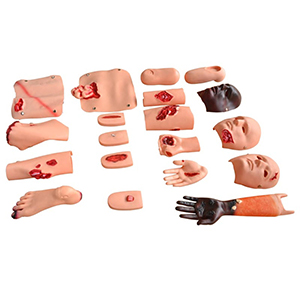ADA MED SUPPLY LIMITED
Phone:+86 19937901373
Tel:+86-0379-65160607
Email:adaanatomy@adaanatomy.com

Article tag: Trauma assessment module medical emergency model

Trauma assessment module, as an important part of modern emergency system, is designed to improve the accuracy and efficiency of emergency decision-making. The following is a detailed elaboration of this proposition:
First of all, through the standardized evaluation process and clear evaluation indicators, it provides a rapid and accurate judgment basis for medical personnel. In an emergency, time is life, medical personnel need to make a preliminary judgment of the patient's injury in the shortest time, in order to quickly develop and implement effective first aid measures. The emergence of trauma assessment module is to solve this problem. It helps health care professionals follow established steps and procedures to conduct a comprehensive assessment of the patient's injury, ensuring that every critical step is not missed and every important injury feature is accurately captured.

Secondly, it has strong information integration and processing capabilities. It can comprehensively analyze and process the critical information such as the patient's injury information, vital signs data and past medical history, and provide more comprehensive and in-depth injury assessment results for medical staff. This kind of information integration and processing ability not only improves the accuracy of emergency decision-making, but also provides a more scientific decision-making basis for medical personnel.
In addition, it has the function of real-time feedback and dynamic adjustment. During first aid, the patient's injuries may change over time and with the implementation of treatment measures. The trauma assessment module can monitor the change of the patient's injury condition in real time, and dynamically adjust the assessment results according to the actual situation. This real-time feedback and dynamic adjustment function ensures the timeliness and accuracy of emergency decision-making.
To sum up, the application of trauma assessment module can indeed improve the accuracy and efficiency of emergency decision making. Through standardized assessment process, powerful information integration and processing capabilities, real-time feedback and dynamic adjustment functions, as well as promoting the popularization and standardization of first aid knowledge, it has injected new vitality and momentum into the modern first aid system.